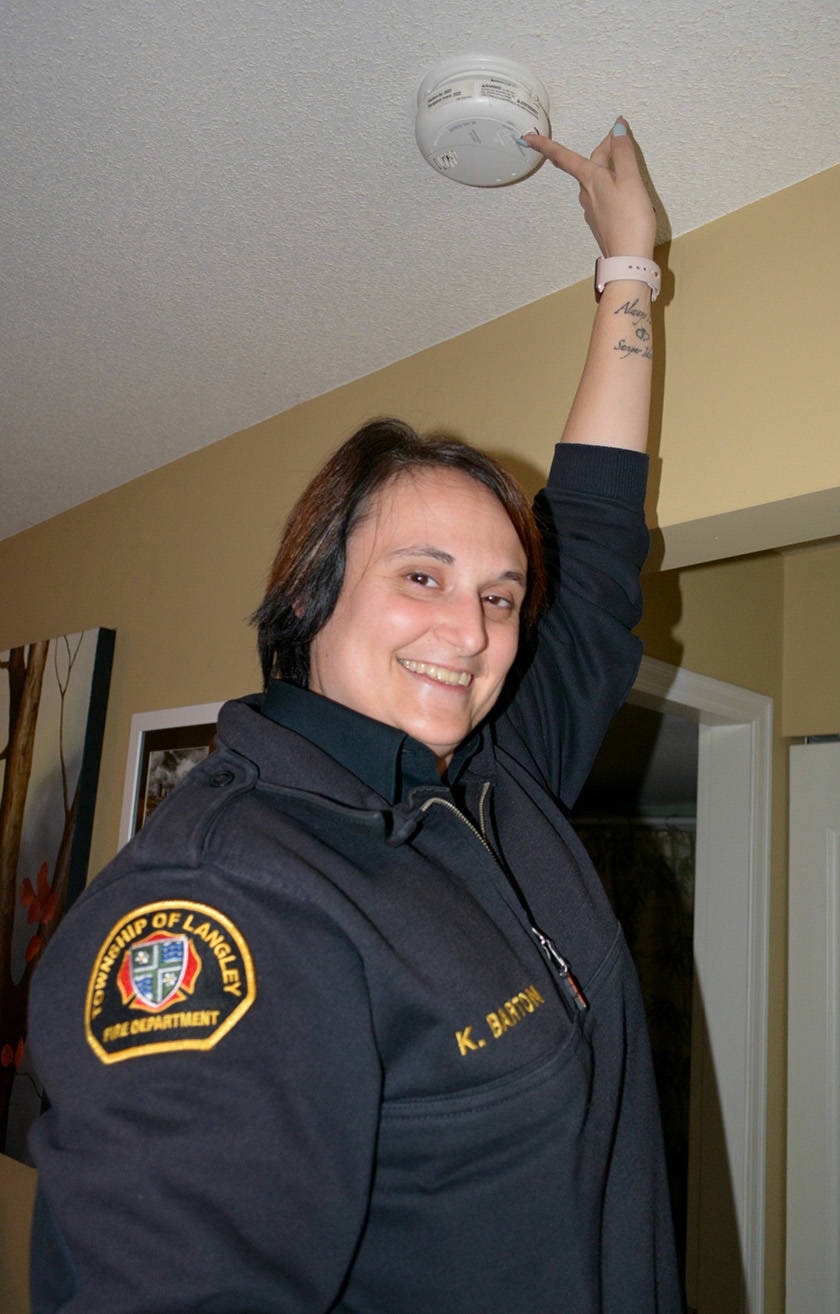When there is a fire, smoke spreads quickly. Ensuring your home is equipped with functioning smoke alarms that activate in the initial stages of a fire gives those inside the chance to get outside quickly, and cuts the risk of dying in a home fire by half.
And “functioning” is the most important word when it comes to smoke alarms, according to the Township of Langley Fire Department.
“Smoke alarms are a key part of any home fire escape plan,” said Public Fire and Life Safety Educator Krista Barton, “but smoke alarms can only save lives if they work properly.”
That means testing the devices once a month to make sure they are functioning, changing the batteries once a year, and replacing the alarm every ten years.
“If you press the test button on a device that is more than ten years old, the alarm may sound but it may no longer detect smoke,” she said. “Over time, as with many things, parts wear down and the alarms decrease in effectiveness. You can hope that they are doing their job, but why take that chance?”
To determine the age of smoke alarm, look at the manufacturing date on the back. The alarm should be replaced ten years from that date. Any smoke alarm that does not respond after a new battery is installed should be immediately replaced.
Residents who live in rental housing must also have working smoke alarms. Landlords and apartment managers are responsible for installing and testing alarms to make sure they are in working order, prior to tenant occupancy. The landlord is also required to keep smoke alarms in working condition.
Here are some tips to ensure smoke alarms and carbon monoxide alarms are functioning properly:
Smoke Alarms:
Install a smoke alarm on every level of the home, in every room where people sleep, and outside each sleeping area.
Interconnect all smoke alarms throughout the home so when one sounds, they all sound. Make sure you can hear the smoke alarm.
Smoke alarms can be battery operated in homes constructed before March 31, 1979. Homes constructed after March 1979 require smoke alarms to be permanently wired into the electrical system and interconnected. Smoke alarms can be interconnected electrically by a qualified electrician.
There are two types of smoke alarms: ionization smoke alarms are more responsive to flaming fires and photoelectric smoke alarms are more responsive to smoldering fires.
Choose a smoke alarm that has the label of a recognized testing laboratory.
Install smoke alarms away from the kitchen to prevent nuisance alarms. They should be at least three meters (10 feet) from a cooking appliance.
Make sure everyone in the home understands the sound of the smoke alarm and knows how to respond.
Follow the manufacturer’s cleaning instructions to keep smoke alarms functioning properly. The instructions are included in the package or can be found on the internet.
Carbon Monoxide Alarms:
Carbon monoxide (CO) is a gas you cannot see, taste, or smell. It is often called “the invisible killer.” It is created when fossil fuels such as kerosene, gasoline, coal, natural gas, propane, methane, or wood do not burn completely.
CO poisoning can result from malfunctioning or improperly vented furnaces or other heating appliances, portable generators, water heaters, clothes dryers, or cars left running in a garage.
Exposure to CO can be fatal. Signs of carbon monoxide include headaches, nausea, and drowsiness.
Install and maintain carbon monoxide alarms outside each sleeping area and on every level of the home.
If the CO alarm sounds, get fresh air. Move outdoors, by an open window, or near an open door. Call the fire department from a fresh air location and stay there until help arrives.
Test your CO alarm at least once a month by pressing the reset or test button. The alarm will sound four quick beeps followed by five seconds of silence.
Replace the batteries annually and replace CO alarms every seven to 10 years.
Know the difference between the sound of the carbon monoxide alarm and the smoke alarm, as well as the low battery signal sounds for each.
For more fire safety tips, visit tol.ca/firesafety or call the Township of Langley Fire Department at 604-532-7500.
